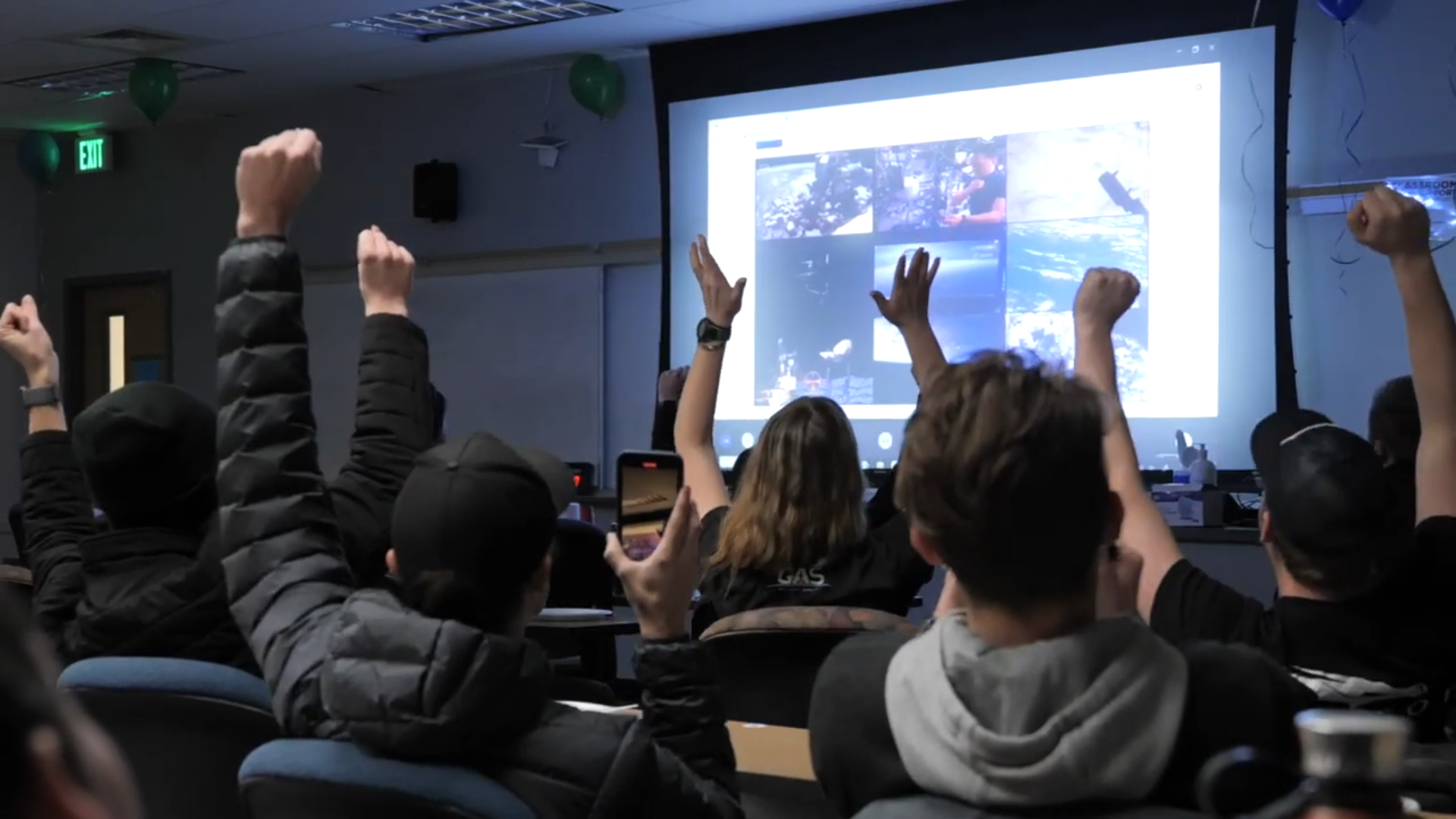The GAS Team's Mission
The Get Away Special Team is a student-run, extracurricular research team within the Utah State University Physics Department that gives students the opportunity to learn real-world engineering skills by effectively contributing to aerospace research. We are fueled by the passion of our team to design, develop, test, and produce something that will advance space technology. We take pride in producing individuals who are prepared to enter the workforce or continue in academia as innovative and cooperative members or leaders of their teams.


Credit: NASA
GAS History
The USU GAS Team gets its name from a NASA program that allowed universities, companies, and other interested organizations to fly small experiments onboard the Space Shuttle. When the program was first announced in 1976, Gilbert Moore stood up, purchased the first payload reservation, and donated it to USU. That payload was the first payload launched as part of the GAS program in 1982. Over the next 20 years USU launched 10 GAS payloads along with one satellite, and several USU students participated in Vomit Comet flights. After the Space Shuttle Columbia disaster in 2003, the GAS program was cancelled.
From 2003-2010, the GAS Team found other ways to fly their experiments. Microgravity experiments were flown on "Vomit Comet" flights, whereas others flew on high-altitude balloon flights. In 2010 the team began the CubeSat program that eventually became GASPACS. The main mission of GASPACS was to deploy a meter-long inflatable boom to passively stabilize the satellite. The next ten years was spent on development with its deployment from the International Space Station occurring in January 2022. Now the team is working on GASRATS, a satellite designed to test an optically transparent patch antenna, in conjunction with Dr. Reyhan Baktur at USU.
The GAS Team
The GAS Team is a student-run CubeSat team at USU. Students on the team perform all the designing, building, and testing of the CubeSat and gain the opportunity to teach themselves and enact real-world engineering. The team allows students to apply what they learn in the classroom to a tangible project, and often students find they learn even more on the team than they would in the classroom. Additionally, the GAS Team allows students the opportunity to involve themselves in multi-disciplinary collaboration with engineers, computer scientists, physicists, businesspeople, and even artists. This collaboration facilitates an environment for students to develop and hone their engineering skills along with communication, leadership, and management skills.
 GAS Team Members at SmallSat 2023
GAS Team Members at SmallSat 2023 Credit: ESA
Credit: ESAWhat is a CubeSat?
A CubeSat is a type of miniaturized satellite based on a 10cm3 form factor. This 10cm3 is known as 1U, with standardized sizes at 1U, 3U, 6U, and 12U. They are often used as a simple solution to launch payloads to space. These small satellites are constructed with modular components, making them cost-effective to develop and launch. CubeSats are frequently launched as secondary payloads alongside larger satellites, allowing universities, research institutions, and even high schools to engage in space missions and experiments.

